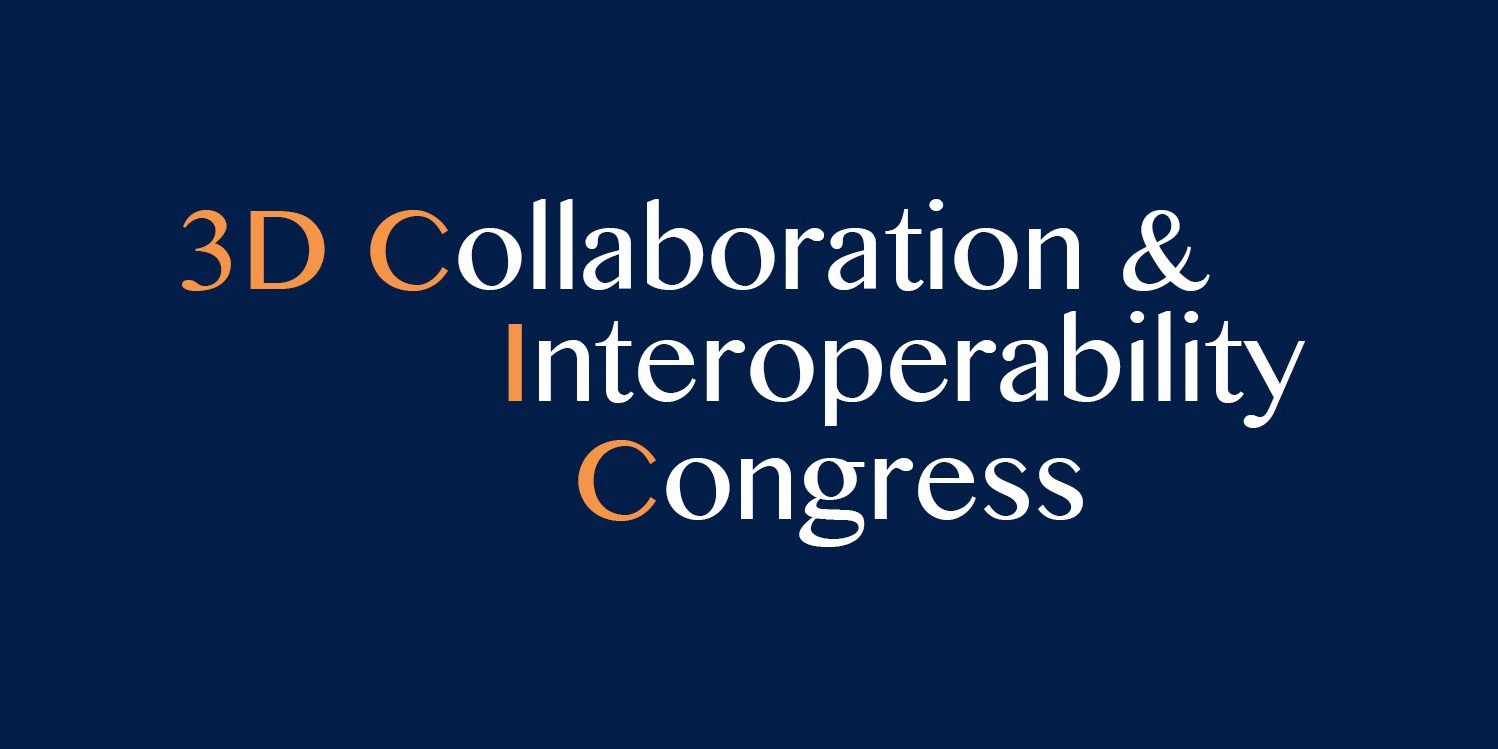As a Signature Sponsor of the upcoming 3DCIC event, ITI's CADIQ Product Manager Raphael Nascimento was recently interviewed by Jennifer Herron, CEO of Action Engineering. The following interview focused on this year's 3DCIC theme of "Trust Digital" is now featured on the Action Engineering blog.
Jennifer Herron: How do ITI’s products drive an enterprise towards the critical Trust Digital concept through automated processes?
Raphael Nascimento: As experts in product data interoperability, ITI offers solutions in the areas of conversion, integration, validation, and migration. CADIQ, ITI’s solution for CAD model validation, is perhaps the most relevant product for this year’s theme of Trust Digital.
The concept of Trust Digital can refer to a number of different things, from trusting digital processes to trusting digital tools. But perhaps the most significant thing is the trusting of digital data – specifically CAD data. Much of the value of becoming a model-based enterprise results from reusing CAD data throughout the design-manufacturing-inspection value chain. If you’re going to rely on your CAD data to be used throughout downstream processes, you need to ensure that the CAD data is of high quality and worthy of being trusted by downstream groups. CADIQ identifies model-based design (MBD) data quality issues that impact downstream reuse for manufacturing, simulation, data exchange, and collaboration. A model that is certified by CADIQ is a model that downstream consumers can trust with confidence.
CADIQ can be seamlessly integrated into PLM systems so that validating the quality of a model, or its derivatives, can be automated and included as part of the promotion or release workflows. As long as there are no issues identified with the data, the design, manufacturing, and inspection processes can thus proceed unimpeded. If some issues are identified, the workflow can automatically notify the appropriate user to resolve them before continuing. The level of automation possible with CADIQ allows companies to trust that their model-based processes can scale to production.
Jennifer Herron: How do ITI’s products cultivate Trust Digital through human processes?
Raphael Nascimento: While automation can offer substantial benefits, it can never completely replace human processes. There are two examples where human interaction is an important part of the process.
The first example is when the CADIQ validation finds some issues with the quality of a CAD model or its derivatives. When this happens a human with knowledge of the production process or the engineering intent should be involved in dispositioning each issue as being either significant enough that it requires some corrective action, or negligible enough that it can safely be ignored. Software tools and automated workflows need to accommodate this human-driven dispositioning activity.
The second example is when comparing different revisions of a 3D model. In this case it is expected that CADIQ would identify some changes between the two models, but the goal of such a comparison is to identify the unintended changes. This process requires knowledge of the intended changes between the two models so that the reviewer can classify the identified changes as being either intended or unintended.

CADIQ can ensure proper documentation of intentional changes is present for downstream consumers.
Jennifer Herron: We find that “the humans” have a gut sense for why they should “TRUST” 3D data but are struggling to solidify strategies that will actually make “the humans” trust the 3D data. We often call these Verification and Validation steps during the move away from 2D drawings as the source authority. How do ITI’s software offerings help out these poor humans?
Refer to definitions for V&V from the PMBOK Guide:
- Validation. The assurance that a product, service, or system meets the needs of the customer and other identified stakeholders.
- Verification. The evaluation of whether or not a product, service, or system complies with a regulation, requirement, specification, or imposed condition.
Raphael Nascimento: I think it’s just human nature for trust to be established gradually over time and for trust to be destroyed very quickly. It can take 20 successful data exchanges before someone begins trusting the process and the data, but only one bad exchange to break that trust.
One thing that can speed up the process of building trust is establishing well-defined and repeatable processes for verification and validation of CAD data. “The humans” are more likely to begin trusting their data sooner if they know that the data meets a strict set of quality criteria and that the process of checking the data is consistently applied to all models. This is why the automation available with CADIQ is important as it helps organizations build consistent and repeatable processes that can be trusted by “the humans” who need to interact with the data.
Jennifer Herron: I find that it is straightforward for me to see the trust picture on a single component, but when we start talking about a family of parts, assemblies and the entire product offerings from an organization, the waters get muddier. To help the humans to trust, can you provide hard and soft savings for when an enterprise uses ITI’s products over a large volume of data?
Raphael Nascimento: It’s been said that becoming a model-based enterprise is a journey. As with any journey it’s important to recognize that you might not have every detail sorted out before you start. In the case of MBE, there certainly are levels of complexity that range from single parts, to part families, to assemblies, and on to full products. While it’s more difficult to imagine how things would work on the higher end of the complexity scale, it’s important to get started on the journey at the lower end of the complexity scale. There are two main reasons to start with the relatively simple stuff. The first reason is that it allows organizations to begin realizing the value of MBD, which helps to justify continued investment. The second reason is that it allows organizations to accumulate experience with the relatively simple problems, which will make solving the more complex problems easier down the road.
CAD model validation is often justified in terms of cost- or risk-avoidance. If you are not currently doing any validation (even manual checking), then your risk of added costs or delays resulting from bad data making its way downstream is increased. CADIQ validation helps to reduce or eliminate this risk. If you are already doing validation, then CADIQ can still provide benefit by doing the validation more efficiently as a result of the process automation mentioned earlier.
Jennifer Herron: How has the demand for ITI’s products’ 3D data trust building evolved as industries’ 3D model-based processes have matured?
Raphael Nascimento: We have definitely seen increased interest in CADIQ over the past several years. This comes on the one hand from new customers who are now embarking on their MBE journey and who want to add CAD model validation to their overall capability. On the other hand, it also comes from existing customers who want to expand their implementations as they mature their processes and expand the scope of their model-based efforts in their organizations.
IJennifer Herron: Can you highlight a few specific areas where ITI’s products drive trust in the model-based process?
Raphael Nascimento: CADIQ focuses on ensuring the quality of a source model and its derivatives during the design phase of the product development cycle. Before passing their models along to downstream manufacturing and inspection, authors can validate that their models satisfy standards of geometric integrity and manufacturability.
MBD models can be checked to ensure that the annotations, attributes, and presentation states all adhere to industry or company standards.
Derivative models, such as STEP, JT, 3D PDF, and others can be validated to ensure that they match their source models in the native formats. Derivative validation includes both the geometry, as well as the MBD data – like annotations, attributes, and presentation states.

CADIQ identifies a PMI translation difference in a derivative CAD model.
Providing authors of CAD data with the tools to identify potential problems with their models improves accountability because these individuals are now able to be responsible for the quality of the data they produce. To put it another way, without such tools it was common for models with problems to be passed downstream because nobody was aware that the problems existed.
Downstream consumers of CAD data are also more accountable because they can insist upon seeing a “Certificate of Model Quality” before doing any significant work with the model in their manufacturing or inspection systems.
Jennifer Herron: What excites ITI the most about 3D CIC 2019?
Raphael Nascimento: On a personal level, what’s most exciting to me about 3D CIC 2019 is having the opportunity to spend a few days hanging out with a bunch of people who share a high level of enthusiasm about the topic of MBD/MBE. There’s always something that I can learn, whether it comes from attending a presentation or from a casual conversation during a break.
As a product manager working for a company that provides software solutions in the MBD/MBE space, I’m also excited by the opportunity to learn more about what companies need from their software tools to help them succeed in their MBD/MBE journey. The 3D CIC event is a great opportunity to catch up with a number of existing customers and prospects who are all gathered in one place.
* * *
ITI is proud to be a Signature Sponsor for the 2019 event, taking place in Golden, CO October 7 - 11. You can register for 2019 3DCIC now.
If you have questions about how to validate your CAD models in the MBE process, drop us a line below or visit the CADIQ Contact page.

